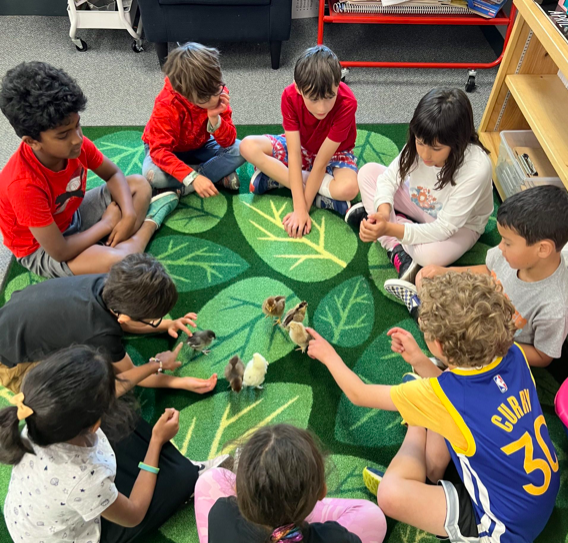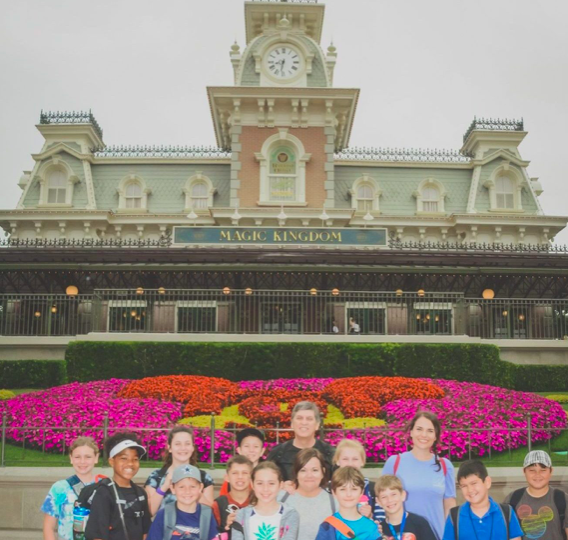Lower School Curriculum
Grade One
Our First Grade students experience authentic and developmentally appropriate learning opportunities as they continue to learn through play in all developmental areas. Building upon our Early Childhood foundational skills, our Lower School students grow in their independence and continue to develop strong academic and social-emotional skills. Within a safe and nurturing classroom environment, the whole child is still valued.
Learning through play and movement, even in the Lower School years, allows for all developmental needs and learning styles to be met. A student’s early-emergent to emergent literacy skills from our Early Childhood program are taken to new heights as they gain the deeper phonics knowledge needed to become early-fluent to fluent readers and writers. Our math, science, and social studies skills will continue to build on concrete experiences as well, in deeper and more elaborative ways as they strengthen their visualization skills, problem-solving skills, and complex understanding of how the world around them works.
Knowing one area of development directly impacts another is at the heart of our understanding of primary learners. Therefore, we continue to use authentic and intentional teaching methods to build a child’s long-term memory with current skills they are learning that they can take with them well beyond their primary years.
Grades Two and Three
Second and Third Grade students at Clariden are placed in a student-led and engaging environment where they are encouraged to learn through individual growths and failures as they transition from a primary focus and prepare for the subsequent Lower School grades.
Throughout these two years, students are guided away from learning to read and transitioned into a reading-to-learn mindset. Students become independent writers as they lean away from learning with a phonological-focused mind to a grammatical one.
We continue to provide a solid mathematical foundation that will encourage stable and consistent growth. Continuing to use a hands-on method during these years to understand the “how” and “why” of math and science builds upon itself and sets our students up for a successful gateway into Fourth and Fifth Grades. During these years, we continue to focus on age-appropriate curriculum and rigor that incorporates the whole brain of each child, while still valuing individual differences and needs.
Grades Four and Five
The Fourth and Fifth Grade years at Clariden help students transition to an independent environment where they learn to organize their own materials, curriculum supports, and course work. During these two years, students become more in charge of their own learning. Students become abstract thinkers in all content areas as they learn about the world around them.
From the strong foundations our educators have built for our students up to this point, students can now move to more complex problem-solving and be encouraged to find multiple solutions, as well as view a myriad of perspectives in their cognitive thinking. At this age, deep discussions occur in all areas of cognitive work as students work to solve real-world problems across contexts. Our small class sizes allow for differentiation to ensure we meet the needs of all learners.
Our educators work to build positive relationships with students as they help students empower self-advocacy for their needs, grow in their self-confidence, feel a sense of belonging, take ownership of their actions, develop a stronger sense of self-identify, and become more aware of their own emotions. Through the continued structure of large and small group work, our students learn to communicate with their peers, problem-solve, have empathy, and learn effective and positive ways to express their creativity.
Project Examples

“Life Cycle of a Chicken”
Students observe the incubation process of a chicken egg. Students learn about the life cycle of a chicken, chicken’s behaviors and characteristics, and factors impacting the incubation. Students learn to care for a chicken egg and chick. During the project, students participate in various STEAM challenges and science experiments and learn how to record data using graphing skills.

“Happiest Place on Earth”
Students study Disney parks around the world. Students use the principles of physics and design to learn about ride engineering and theme park construction. At the end of the project, students travel to Disneyworld in Florida and work with Disney's Imagineers to learn about Disney rides and attractions and work to design their own roller coaster.

